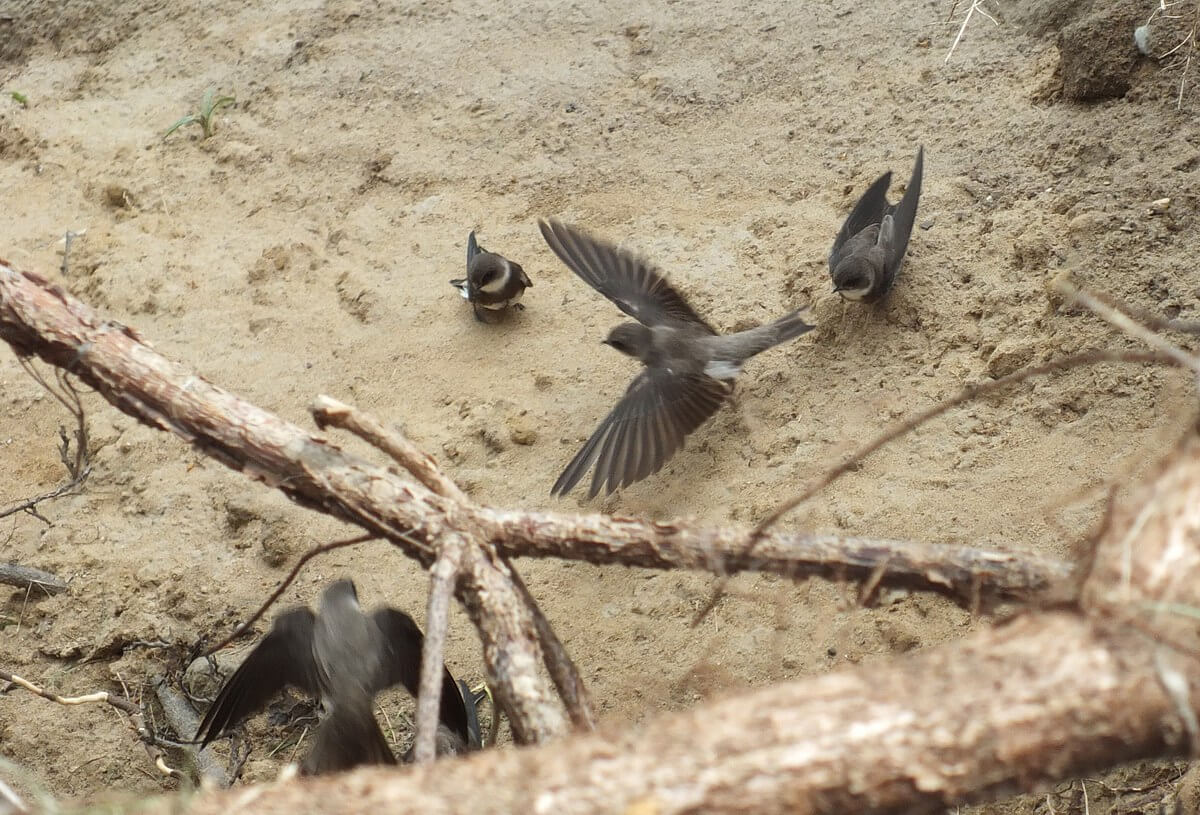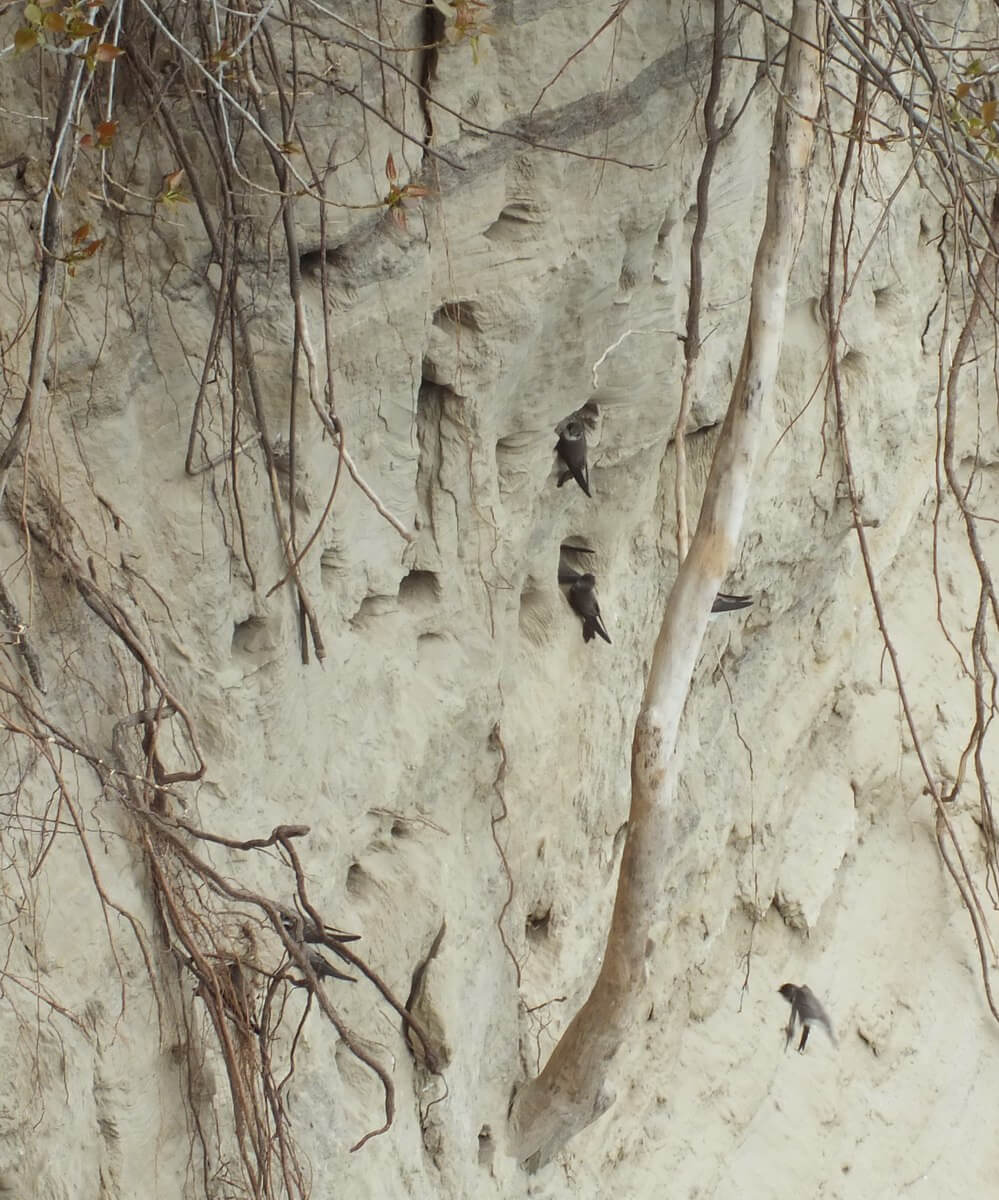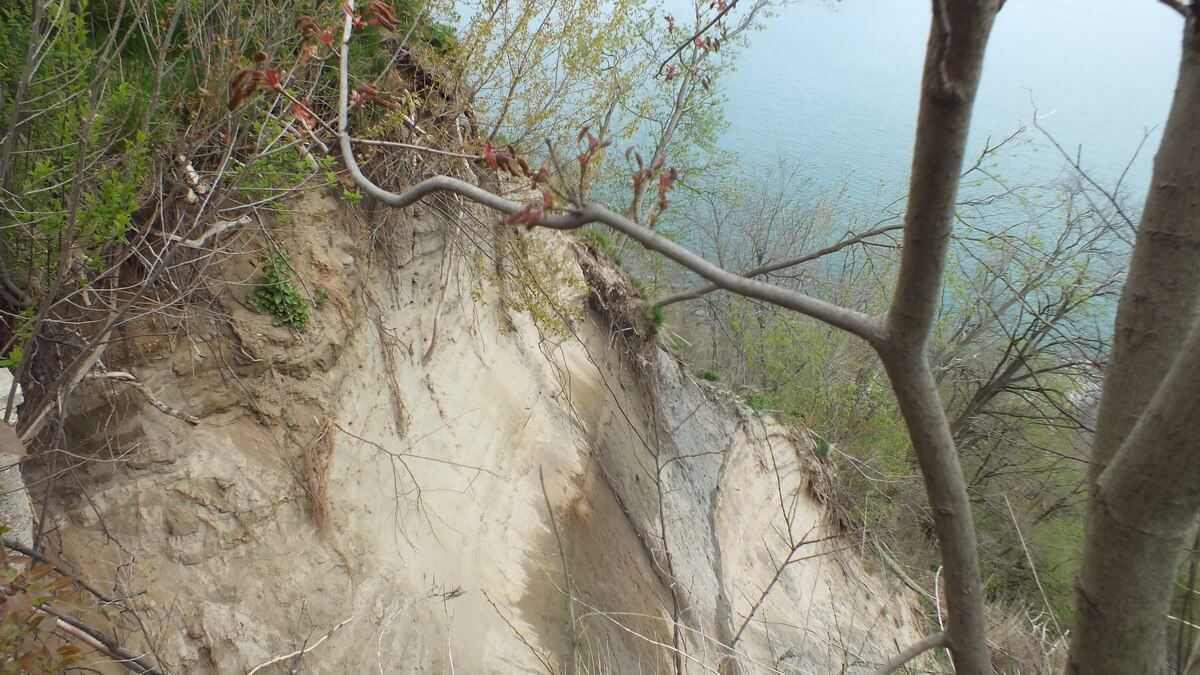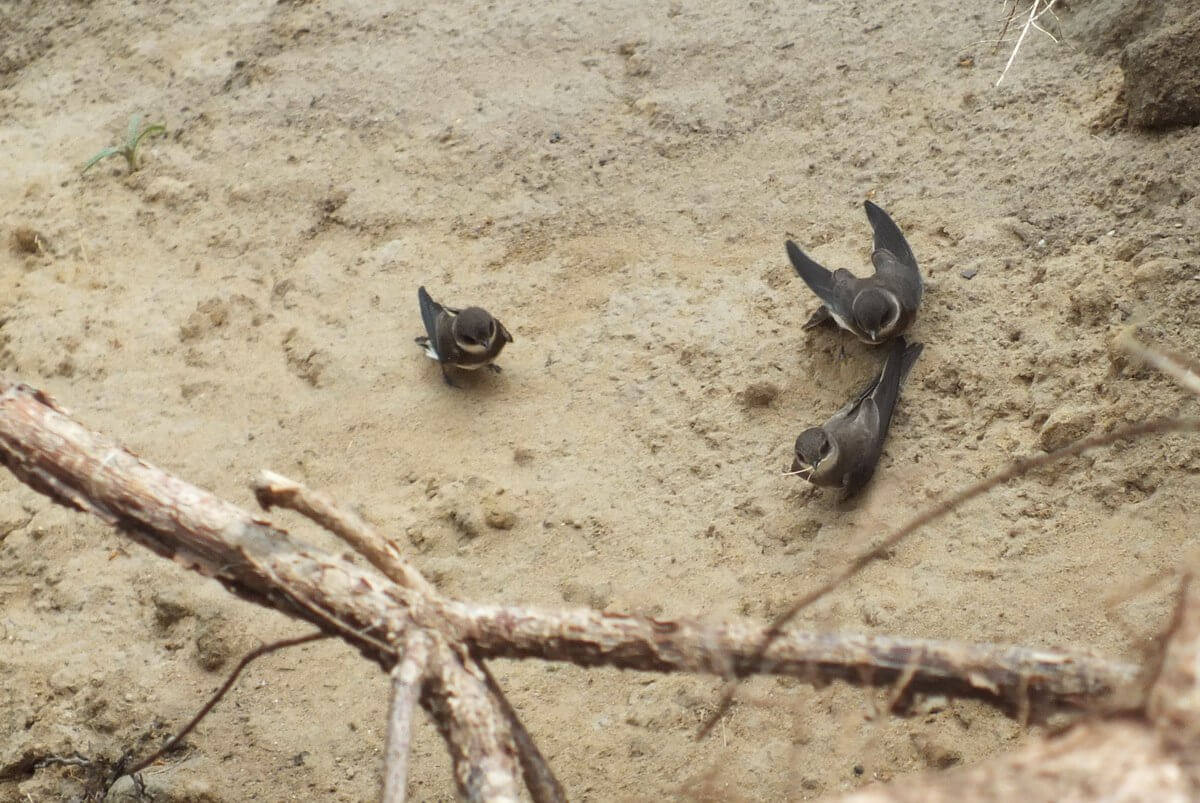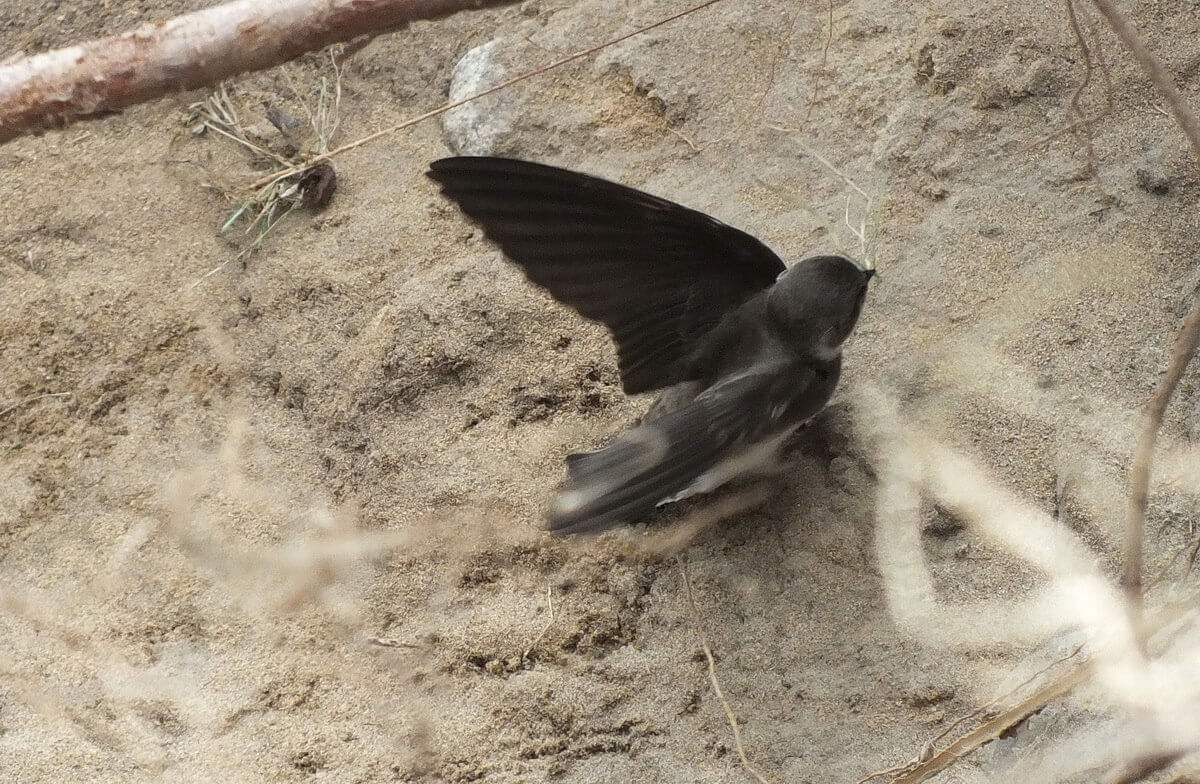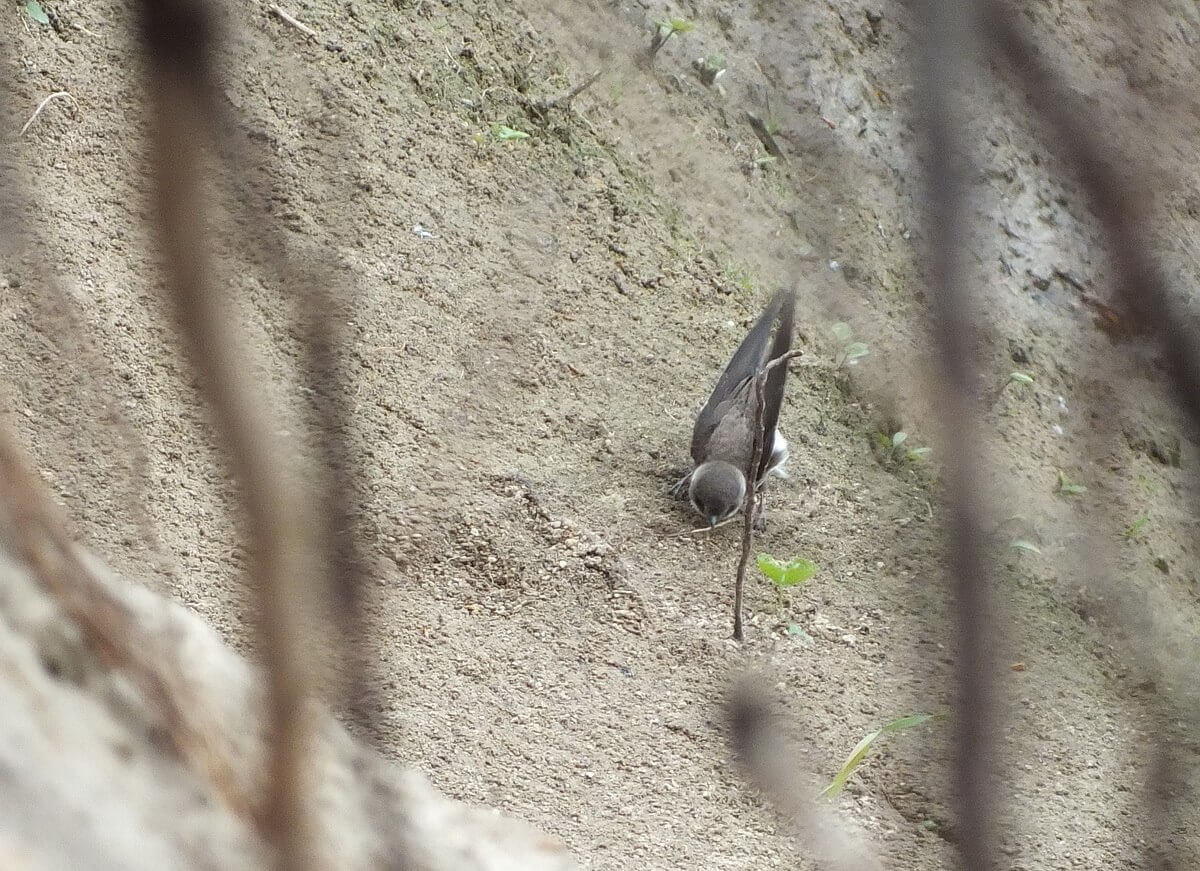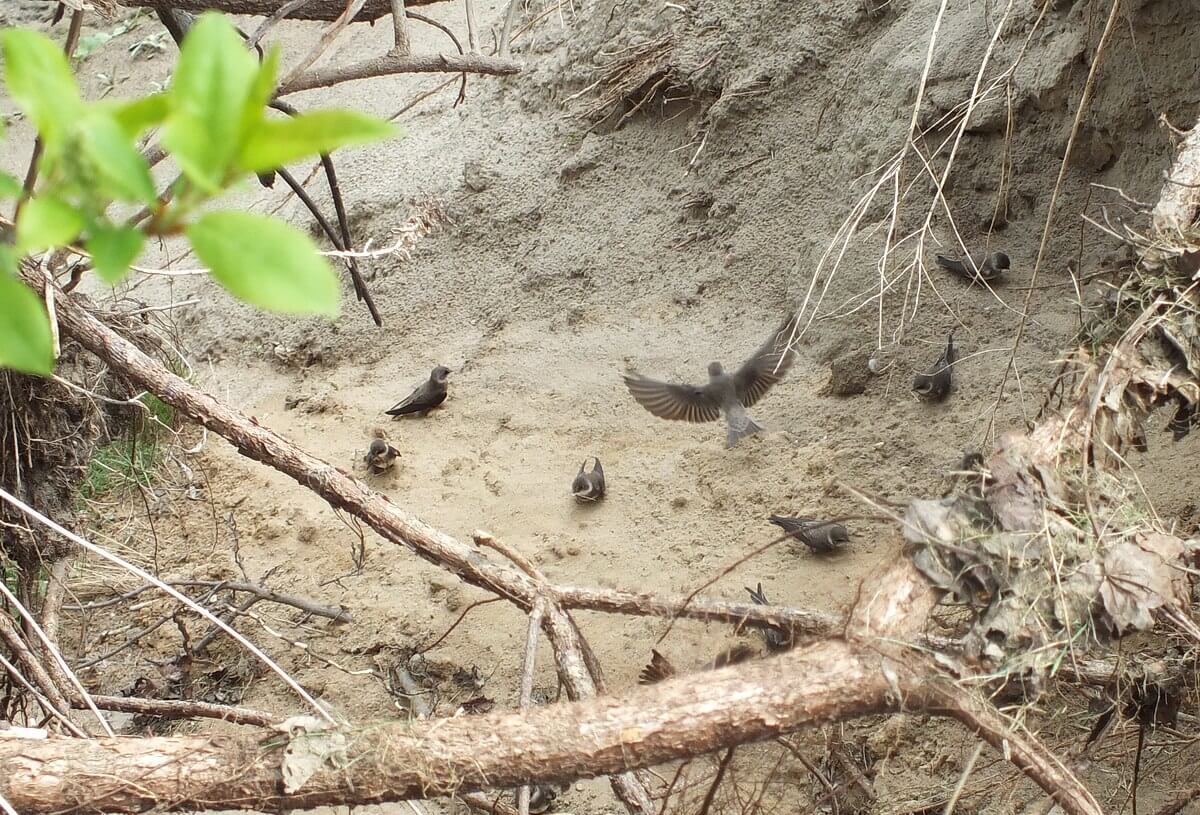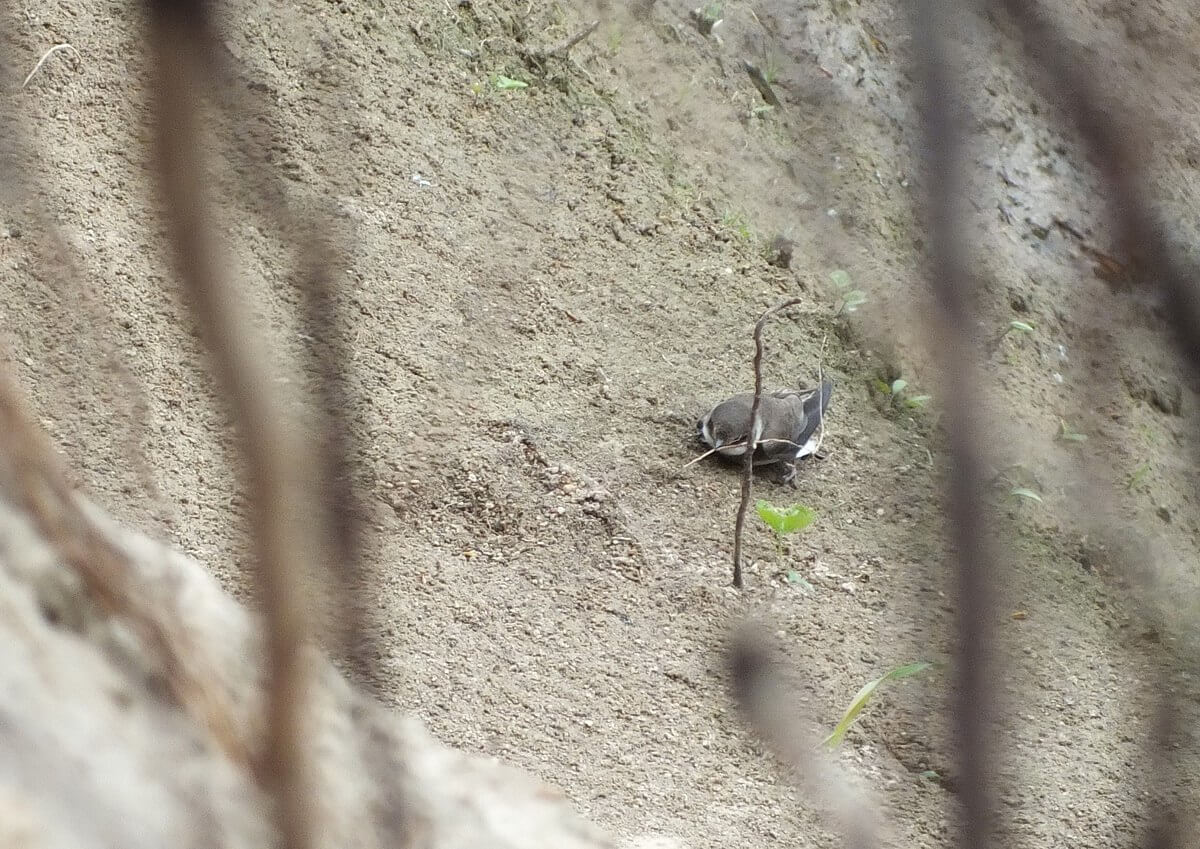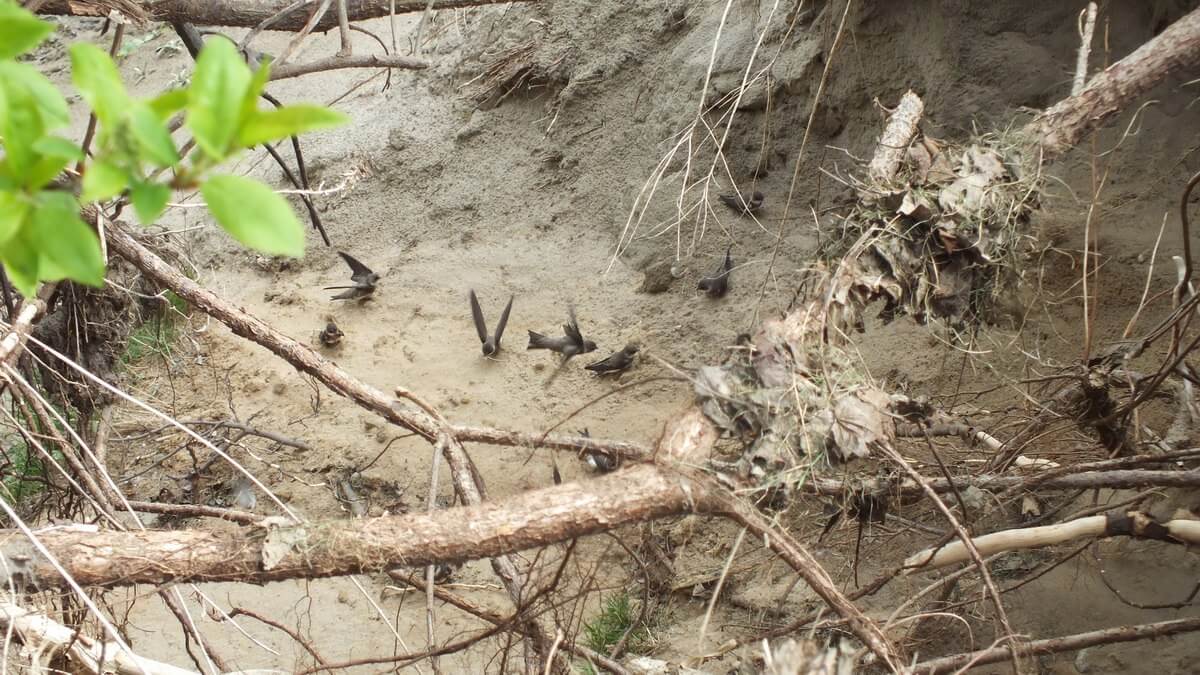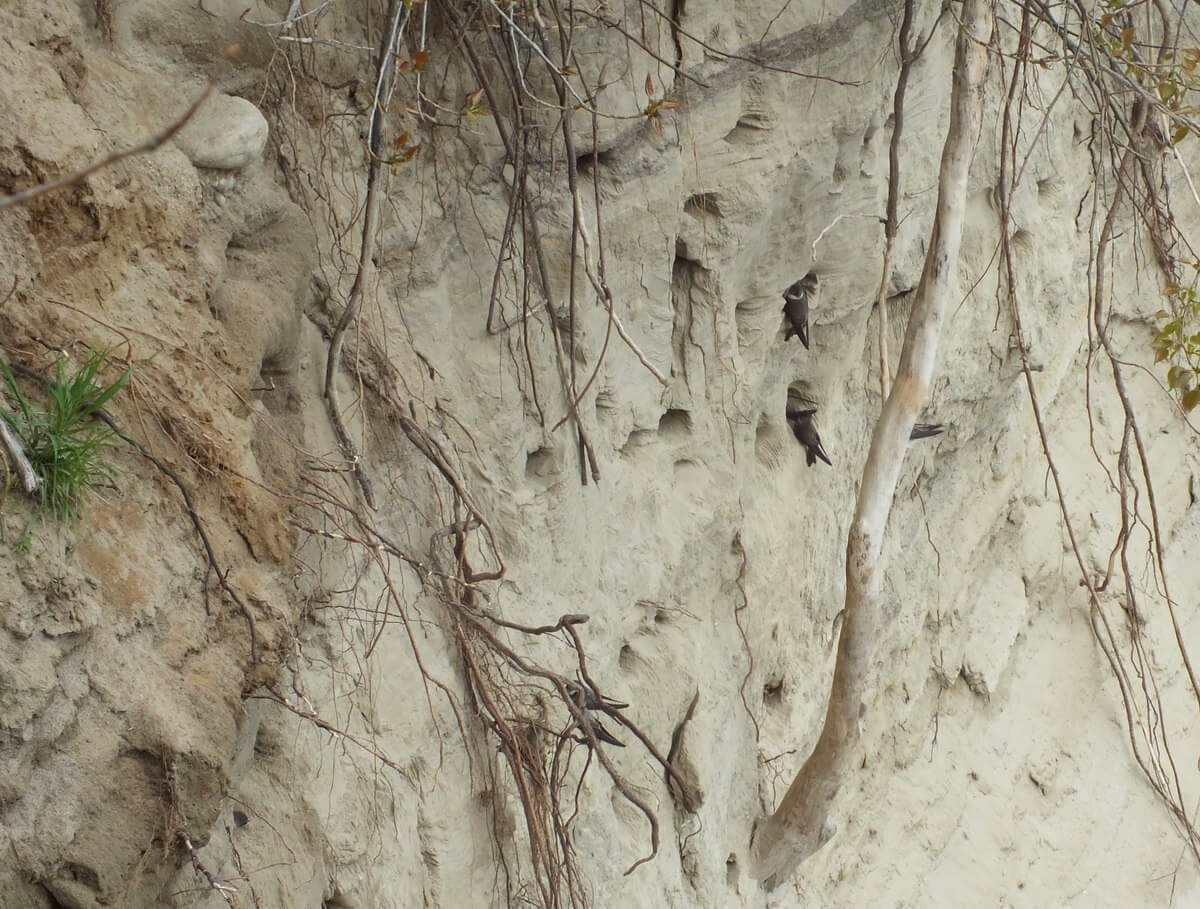Bank Swallows Building Nests In The Scarborough Bluffs
Bob and I were pleasantly surprised to find a colony of bank swallows that inhabit a section of the Scarborough Bluffs, in Toronto, Ontario, Canada. These bank swallows nest just below the rim of the high, steep banks of the escarpment that stretches along Lake Ontario’s shoreline in the vicinity of Rosetta McClain Gardens.
Bank Swallows historically select vertical streamside banks or natural bluffs wherein to build their nest cavities, be these along rivers, oceans, streams or reservoirs. The Scarborough Bluffs rise, at the highest point, 90 metres (300 ft) from the water’s edge providing ample surface area for the Bank Swallows, which like to nest in colonies, to choose a spot and hollow out a nest cavity. Anywhere between 10 and 2,000 nests in one area gives rise to a colony.
The reasons that Bank Swallows nest near bodies of water are one, erosion from the action of the water has provided the steep banks of sand that will host the nest cavities, and two, the swallows primarily eat flying insects. The swarms of midges that appear in early spring fly in clouds over the water making for great hunting for the swallows, which often fly in large groups to take advantage of the concentration of midges. Also, the vast area of open sky over bodies of water allows the swallows to fly vertically.
Fairly loose soil makes it easier for Bank Swallows to dig burrows, and both the females and males accomplish this task using their small feet and conical bills. To begin with, an indentation is made in the cliff’s face using the beak, but once a tunnel begins to emerge, the birds take turns kicking sand out of the tunnel with their feet. The male employs his wings to widen the tunnel and slope it upwards towards the nest chamber, an amazing feat when you consider that the burrows are perpendicular to the ground level and can be anywhere from 20-40 inches (50-102 cm), even 5 feet (1.5 m) deep into the bank .
As Bob and I observed the Bank Swallows, they repeatedly landed on one flat ledge of the sand wall and gathered fine fibres in their beaks. These would become part of the materials used to line the nest cavity in preparation for the eggs. It is the female Bank Swallows that prepare the interior chamber by putting down a mat of dry grasses, straw, pine needles, leaves, feathers or rootlets pulled from the exposed wall of sand. The cushy nest is about 5 inches (12 cm) wide and an inch (2.5 cm) thick.
Bank Swallows are the smallest swallows in North America. Their upper parts are greyish-brown with feathers being darkest on the head, and a clearly-defined dark breast band crosses the white underparts setting off a white throat with some white wrapping back towards the ears. Bank Swallows have a long, narrow tail that is somewhat forked.
The scientific name for Bank Swallows, riparia, is based in the Latin language and means “riverbank” because of where the birds nest. The name Bank Swallow is used for these birds in North America, but in South Asia, they are known as Collared Sand Martins because of the brown band across their chest. Another moniker for the species is European Sand Martin. Given that these birds range over an area of 3.8 million square miles (10 million square kms), it is not surprising that they have different names across the planet. This species numbers near 46 million birds around the world.
The long slender wings of Bank Swallows are perfectly adapted for swift maneuverability across long distances; these birds can reach speeds of 31 miles per hour (50 kph).
Humans value Bank Swallows because they help control insect and pest populations. Because the birds nest near water, it is natural that they eat insects that take to the air after hatching in the water, like midges and gnats, but the swallows also eat flies, moths, butterflies, grasshoppers, crickets, and aphids.
Bob and I noticed that, when away from the nest, the Bank Swallows seemed to congregate together. Even when gathering bits of grass and rootlets, there was never just one bird on its own. This comes of their propensity for nesting in colonies; they have developed complex social behaviors that see them huddling together during cold weather and hunting in flocks.
It was intriguing to watch the Bank Swallows disappear into their nest cavities at Rosetta McClain Gardens. We were lucky that the tunnels were so high up on the bluffs so as to give us a reasonably good look.
Frame To Frame – Bob and Jean

